Our recommendations will help you reduce the amount of your check - without sacrificing quality.
What are some ways to save money?
1. Arrange an audit
If your child is not a first-grader, there are probably school supplies that can be used for further use lying around in his closet. Sharpen old pencils, tear out clean sheets of paper for drafts from half-written notebooks, wash a fabric pencil case in soapy water, clean dirty erasers on thick paper or sandpaper.
Look, it turns out that your school is one third full.
2. Make a list and follow it strictly
To avoid buying too much, ask your class teacher for a list of necessary stationery. Check how many pages there should be in notebooks (12, 18 or 24) and whether they are purchased centrally.
If there is no connection with the teacher, write down the most necessary things on the sheet. Don't buy anything "just in case." You will always have time to buy what you need later, when you really need it.
In the meantime, here is an approximate list of school supplies for the first time (taking into account the fact that various little things like erasers are constantly lost, forgotten, and end up in classmates’ pencil cases).
- Notebooks are squared and ruled ( oblique - up to the third grade, although some schools switch to regular rulers earlier), 12 sheets (junior school) or 18-24 sheets (middle and high school) - 5-10 pieces each.
- Covers for notebooks - 20 pieces.
- Diary (if not ordered at school) - 1 piece.
- Folder for notebooks - 1 piece.
- Sketchbook - 1 piece.
- Pens with blue paste - 3-4 pieces.
- Simple pencils - 2-3 pieces.
- Colored pencils - 1 set (six primary colors are enough for a first grader).
- Colored paper and cardboard - 1 pack each.
- Glue stick - 1 piece.
- PVA glue with a brush - 1 bottle (20 ml).
- Rulers - 2 pieces.
- Scissors with rounded ends - 1 piece.
- Sharpeners with containers - 2 pieces.
- Erasers - 2-3 pieces.
- Pencil case - 1 piece.
3. Avoid globes and notebook holders
Although these are the two things people associate with school, many children never use them.
The globe takes up precious space and collects dust. Stands, as a rule, are not very convenient: schoolchildren often tear sheets when they try to quickly turn the page of a textbook. And these unstable iron structures fall noisily. To place a book at an angle on the table, just place a pencil case under it.
4. Don't wait until the last minute
Shop according to the list at least two to three weeks before the first call. There is no crowd in the stores yet, the range of goods is wider, and sellers have not increased prices in the wake of the general hype. The most affordable prices for popular stationery and the best selection, oddly enough, are provided by chain hypermarkets where you go for groceries.
5. Team up with other parents
Buying items together is always cheaper than buying items individually. You don't have to join the whole class. For small wholesale, it is enough to agree with three to five parents. Discounts can be a pleasant 5–20%.
6. Take advantage of discounts in online stores
Keep track of sales and promotions. In addition, when ordering over a certain amount, many online sellers offer pleasant bonuses all year round, such as free shipping or the opportunity to purchase at wholesale prices.
7. Do not involve a child in purchasing
A trip to buy stationery in the company of a junior high school student is fraught with an increase in the bill by one and a half times. The child grabs everything he likes, so it is more difficult to stick to the list. In addition, children are greedy for colorful covers, bright colors, pendants, trinkets and other decorations that inflate the price. And they often make the purchase less suitable for the main purpose - study.
If a student wants to take part in the process to the point of tears, so be it: let him choose a couple of school supplies (for example, a sketchbook, one notebook with his favorite character and a folder). But make the basic purchases yourself, using common sense.
8. Don't be tempted by cheap prices
A student does not need premium stationery. But this does not mean that the cheapest everything will suit him. Suspiciously low prices may indicate poor quality. The pen will stop writing the next day or will leak, staining your clothes, briefcase and notebooks. A pencil will tear the paper, and a sharpener will break the lead. As a result, you will pay more.
How to choose school supplies
How to choose notebooks
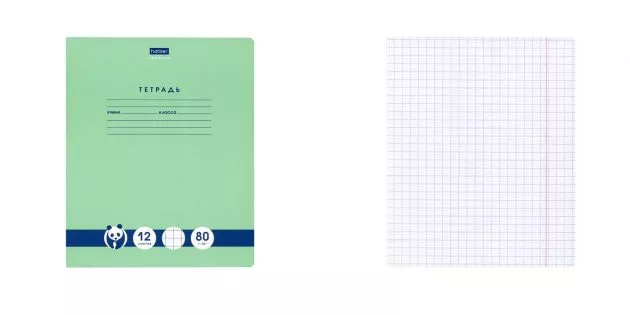
Avoid notebooks with bright white smooth paper and glossy covers with cats, dogs and cartoon characters. They are more expensive, and bright pictures distract from the learning process. In addition, it is more difficult to write on a smooth surface: the paste smudges easily and leaves stains. And on a beautiful glossy cover with Superman or Cheburashka, you will have to stick a rectangle cut out from an ordinary notebook to indicate the subject, class, school number, first and last name.
Here are a few signs of a “correct” notebook.
- Neutral cover.
- Slightly rough paper.
- EAC marking on the back. This means that the product complies with the Technical Regulations of the Customs Union. According to the existing standard, the paper density in a school notebook should be at least 60 g/m2. The higher it is, the more comfortable it is to write and read. For example, in the USSR, 70 g/m2 was considered the norm for a school notebook. Some manufacturers still produce notebooks with high-density paper. They are a little more expensive, but there are no press marks left on the sheets from a fountain pen.
- Clear, but not too bright line. Blurred outlines or too much contrast between lines and paper irritate the eyes. The second point: the ruling must match on the spreads and in the light. Obvious misalignments make reading and writing difficult.
By the way, you can also buy several of the cheapest notebooks with gray paper - they will be useful for drafts .
How to choose covers
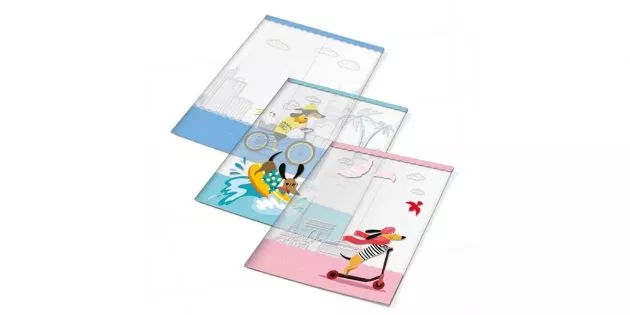
Pay attention to the density indicated in microns (µm). The lower the number, the cheaper the cover. And the sooner it will break. Acceptable quality starts from 110 microns.
How to choose a pencil case
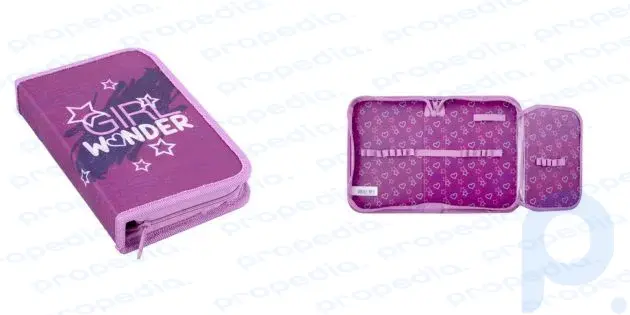
The basic rule is that the pencil case must be durable. After all, it will be accidentally dropped and deliberately thrown. And also - in a hurry to open, tearing out poorly sewn zippers or buttons that are held on by word of honor.
The second important point: do not buy complete pencil cases. As a rule, they are filled with not the highest quality office supplies at inflated prices.
The best option for younger schoolchildren is a folding pencil case-book with a strong zipper. It will fit all the supplies needed for the lesson. Having opened such a pencil case, the child will see pens, pencils and erasers at a glance. He won’t have to rummage around looking for the right thing, as is the case with a cosmetic case or tube.
Pay attention to the inside of the pencil case. It should be plastic or textile - then you can easily wash the item or even wash it in a machine . But cardboard walls will not survive cleaning.
How to choose a pen
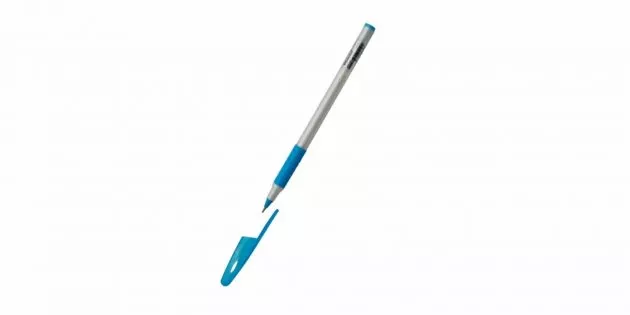
A lightweight ballpoint pen, about 15 cm long, with a rubber insert that prevents sweaty fingers from sliding down, fits perfectly into a child’s hand. Make sure that the ampoule does not scratch the paper, but at the same time writes finely - otherwise unsightly stains will appear in the notebook.
How to choose a simple pencil
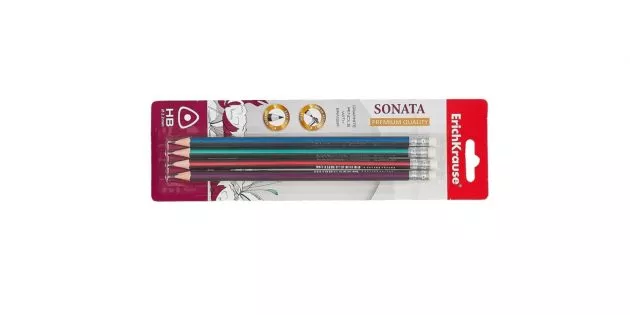
For the needs of a student, a regular wooden pencil is best suited. When choosing, consider three parameters: the shape, the hardness of the lead and the type of wood from which the body is made.
Edged pencils are easier to hold in your hand than round, smooth lead.
The hardness should be standard, hard-soft. It can be identified by the TM or HB marking. Separate T or H (from the English H - hardness) are placed on hard pencils intended for fine lines and drawings. Such a lead will scratch or tear a school notebook. The letters M or B (from the English blackness) indicate a soft lead for artistic sketches. It doesn't wash well and leaves stains on the paper.
The best materials for pencils are cedar, pine, or jelutong. Their dense, durable and at the same time soft wood is easier to sharpen and lasts longer. But the price will be higher. Standard school pencils are made from linden. Alder and poplar are used for cheap consumer goods. Such products can delaminate and crumble when sharpened, and they quickly lose their presentation.
How to choose colored pencils
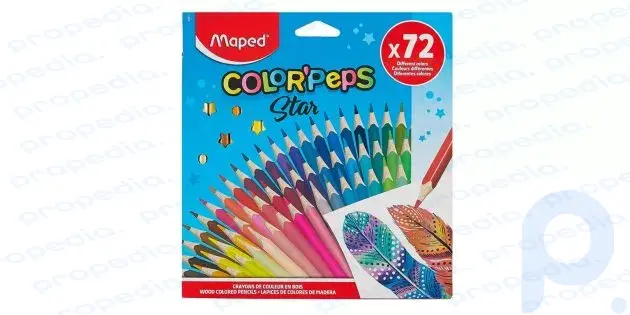
About the same as simple ones. Plus one more tip. For little artists , thicker pencils with a triangular body that fits comfortably in the grip of the thumb, index and middle fingers are ideal. The lead in this pencil is also thicker than usual and therefore breaks less often.
How to choose a sketchbook
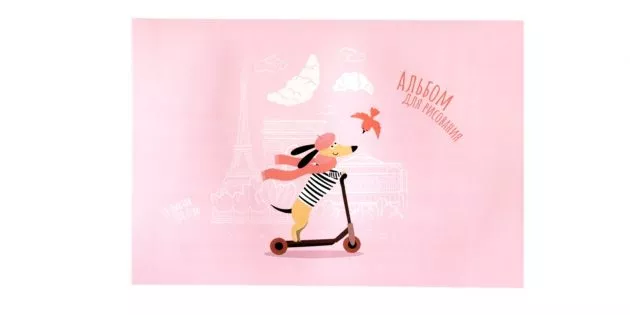
Again, pay attention to the thickness of the paper. For elementary and middle school students, it is better to buy albums with sheets with a density of 160–200 g/m2. They will withstand both markers and paints. Thinner sheets are only suitable for pencils and wax crayons.
Mounting matters too. Glued sheets will quickly fall apart, and it is difficult to tear a sheet out of an album with staples, so the best option is a model with a spring connection.
How to choose an eraser
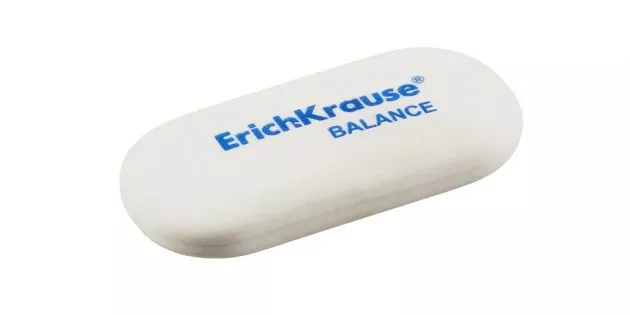
It is very convenient if the eraser is attached to the pencil body. This way you won’t lose it and it’s always at hand. Separately, it is better to buy a nondescript “washing machine” made of natural rubber (rubber). Bright synthetic options work much worse, as they crumble and leave dirty marks on the paper or tear it.
In any case, before purchasing, give the eraser a test drive: draw a line on the paper with a pencil and erase it.
How to choose a sharpener
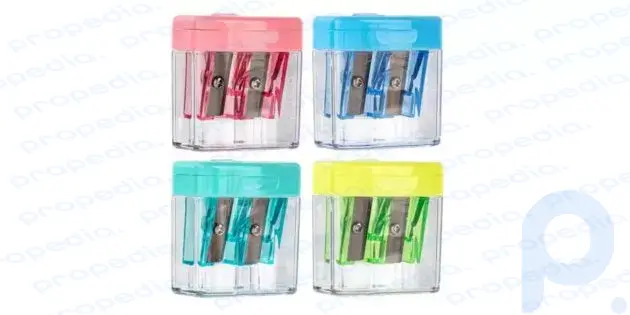
It is better to take a sharpener with a container for collecting shavings and holes for pencils of different diameters. Get ready for the fact that you will have to change this weapon at least once every six months: the blade becomes dull over such a period of time and already breaks, rather than sharpens, the stylus.
How to choose rulers
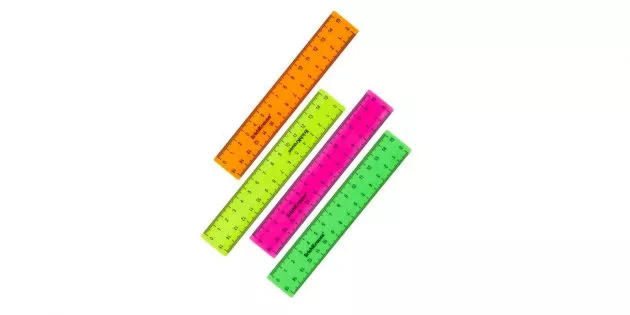
For a primary school student, a ruler 10–15 cm long will suffice. In middle school, you will need a longer device, plus a triangle and a protractor.
A universal choice is a ruler made of lightweight plastic with clear divisions. You can also take a wooden one, but it is more bulky, and when wet it can swell and become deformed. But if you consider that rulers, like other little things, are quickly lost, the chances of them getting damaged are low.
*Activities of Meta Platforms Inc. and its social networks Facebook and Instagram are prohibited in the Russian Federation.

